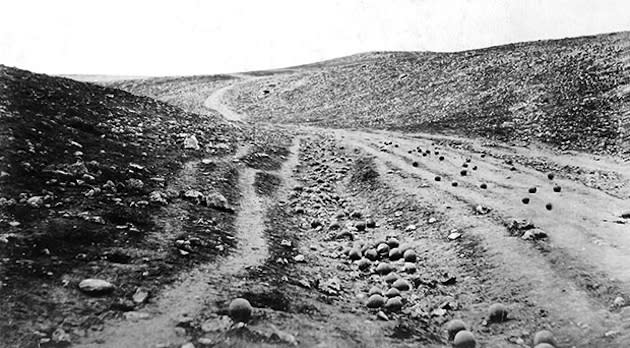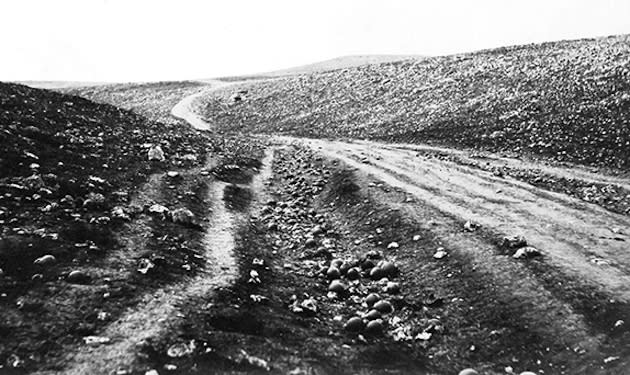 The Sideshow
The SideshowThe world’s first faked photo

Documentary filmmaker Errol Morris may have uncovered the world's oldest staged photograph, a wartime image taken in 1855.
Radiolab spoke with Morris, who unleashed his legendary attention to detail upon Roger Fenton's renowned photo, "The Valley of the Shadow of Death," considered to be one of the oldest known photographic images of warfare.
The photo was taken during the Crimean War (1853-1856) and shows a road littered with cannonballs. The Crimean War was a massive conflict that saw Russia battling with Britain, France, Sardinia and the remnants of the Ottoman Empire for control over the declining Ottoman Empire.
The Crimean War itself is arguably history's first "modern" war, featuring new communications technology (the telegraph) and weaponry, along with the use of photography. And Fenton's photographs taken during the war are considered to be some of the earliest ever to document warfare.
From Radiolab:
"[I]t turns out there were actually two photos--both taken from the same spot over 150 years ago. One image famously shows a road littered with cannonballs, while the other shows the same road with no cannonballs (they're off to the side in ditches). Which one came first? And why would the cannonballs have been moved?"
Morris has written a series of blog posts about his investigation for the New York Times, in which he explains how the photo's history first captured his interest after reading a book by Susan Sontag that flatly alleges Fenton staged the photograph.
As part of his extensive efforts to uncover whether the photo was staged, Morris traveled to Crimea and consulted with optical engineer Dennis Purcell and five historians.
The historians were split on whether the photo was staged, with some arguing that the cannonballs are missing in the second photo because soldiers were recycling them to fire back at Russian forces.
Eventually, Purcell and Morris were able to reach a definitive conclusion about whether the photo was faked, by flipping the two photographs over and over. Eventually, they realized that pebbles on the left side of the road appeared to move in the two photographs. From the direction of the rocks falling, Morris was able to sequence the two photographs. "The one with the cannonballs on the road was the second picture," Morris said.
In other words, the photo with no cannonballs on the road is the original picture. Fenton and his assistants rolled the cannonballs downhill and placed them along the road.
"Whoever was helping him would have walked along the side of the road and moved the cannonballs down to the side of the road. It's gravity." Morris said.
In other words, Susan Sontag was right. "But for the wrong reasons," Morris said.
While calling Fenton a "coward," Morris acknowledges he doesn't know exactly why the photographer staged his shot. But Purcell has his own opinion, saying Fenton was aiming for the "emotional truth" of the nearby battlefields.
"It's obvious why he did it; to make it look like the way it felt," Purcell said.


